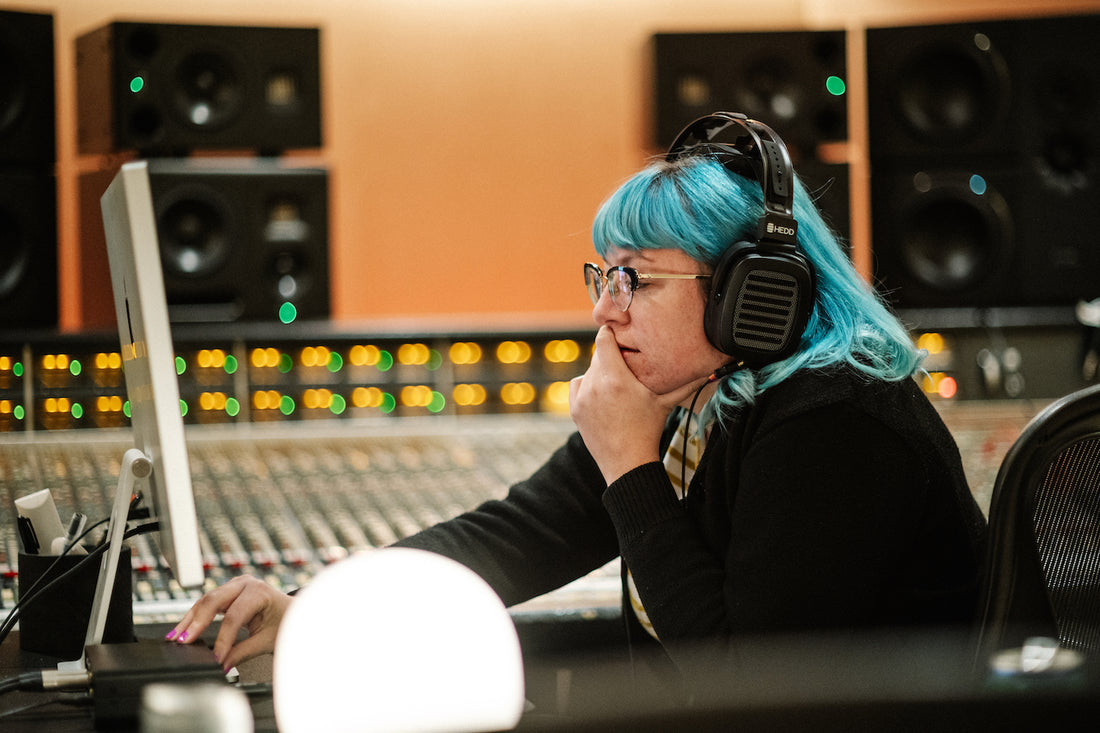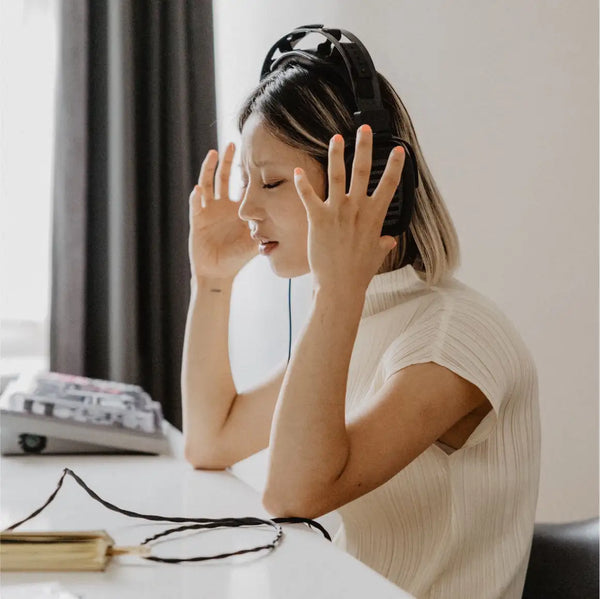
Open-Back Vs. Closed-Back Headphones: How to Choose
Using headphones to produce, record, and mix music professionally is more and more common. Headphones have grown from sonically limited yet useful helpers in the studio to powerful production tools that can be used in even the most critical stages of any project.
A good pair of professional headphones is a wise investment for working with audio and it also provides a great additional way to listen to your favourite music. However, you should always remember that headphones behave very differently to loudspeakers in several crucial ways, meaning you get a distinctively different perspective on your music.
All this said, when it comes to high-quality headphones the one decision you will need to make is between the two primary types available today: open- or closed-back. Below we break down the pros and cons of each to help you make the right choice.
Open-Back Headphones
Open-back headphones are designed to allow sound to freely pass both in and out of the ear cups, often using what’s called a vented design. This creates an airy soundstage and a more natural listening experience, closer to that of a loudspeaker playback system. The sound is coming to your ears as if you were in a free field.
With an open-back design your ears are less irritated by inner cup reflections and resonances, caused by the use of a sealed enclosure. Therefore they are often preferred for mixing and mastering situations where critical listening is required. They are also the best solution for audiophiles who are looking for the most accurate sonic representation of their favourite music.

Korean sound artist machina in her temporary Berlin home studio, where she relies on the HEDD TYPE 05 MK2 monitors and HEDDphone TWO to produce electronic music without distractions.
Advantages of open-back headphones
- Soundstage: Open-back headphones deliver an expansive soundstage where audio feels like it is coming from outside of your head for a more immersive and lifelike listening experience.
- Airiness: An open-back design is inherently more comfortable for longer listening sessions as it offers better breathability and prevents the build-up of heat.
- Natural sound: Audio reproduction with open-back headphones tends to be more transparent and natural, allowing you to hear a wider range of nuances and details in the audio signal.
- Sonic consistency: Open-back headphones do not need a perfect seal, so there is less leakage and the bass response is pretty much the same no matter how you wear them.
Limitations of open-back headphones
- Noise leakage and lack of isolation: The main drawback of open-back designs is that they are not suited for environments with no noise isolation, where external sound sources may negatively impact what you’re hearing or where the sound leaking from your headphones may impact others. In the context of music production, they remain first and foremost a solution for use in situations where you can control how much noise you’ll be working around.

The HEDDphone TWO's open-back design makes it ideal for immersive listening experiences and precise audio work.
Closed-Back Headphones
Closed-back headphones are designed with sealed ear cups that prevent sound from escaping or entering. This design approach provides a good amount of noise isolation, often combined with an enhanced bass response, which makes it an ideal choice for providing cue mixes, recording instruments or voices, or working on the go whether that be producing or engineering.
Advantages of closed-back headphones
- Noise isolation: Closed-back headphones are perfect for blocking out external noise, allowing you to focus on the audio signal and nothing else.
- Enhanced bass: The sealed design will often result in a more pronounced and impactful bass response. While this may often come at the cost of some natural timbre, better models are designed to ensure that this doesn’t result in too much colouring of the audio signal.
- Versatility: Thanks to their noise isolation, closed-back headphones are more versatile than open-back and offer a wider range of use cases.
Limitations of closed-back headphones
- Soundstage limitations: Unlike the open-back design, closed-back headphones typically have a more intimate soundstage which narrows your sonic perspective and can lead to inaccuracies when playing back on speakers or monitors.
- Heat buildup: The closed ear cups can lead to increased heat buildup during extended listening sessions and an overall less comfortable experience.
A Sound Choice
Your choice of headphone type will depend on a variety of factors but it’s worth keeping in mind that open-back headphones are widely considered as the best option if you prioritise critical listening and an honest view on the music you work with or simply love listening to.
This is one of the biggest reasons why we designed the HEDDphone as open-back. This approach coupled with an updated Air Motion Transformer driver design means the HEDDphone provides a precise and natural listening experience that can easily translate to other playback systems.

